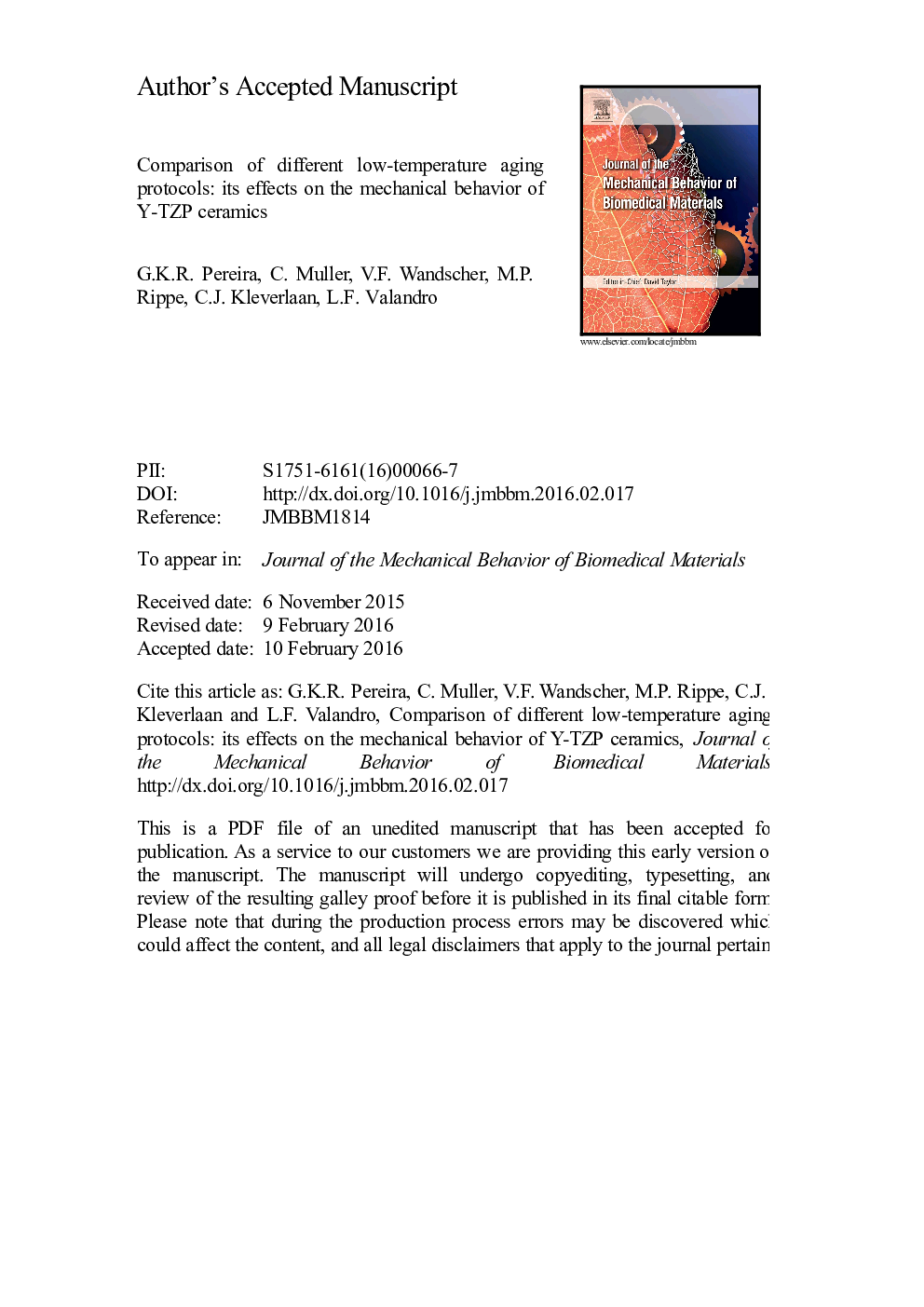| Article ID | Journal | Published Year | Pages | File Type |
|---|---|---|---|---|
| 7207993 | Journal of the Mechanical Behavior of Biomedical Materials | 2016 | 15 Pages |
Abstract
This study evaluated the effect of different protocols of low-temperature degradation simulation on the mechanical behavior (structural reliability and flexural strength), the surface topography (roughness), and phase transformation of a Y-TZP ceramic. Disc-shaped specimens (1.2 mmÃ12 mm, Lava Frame, 3M ESPE, Seefeld, Germany) were manufactured according to ISO:6872-2008 and divided (n=30) according to the aging protocol executed: “Ctrl” - as-sintered - without any treatment; “Dist Water” - stored at distilled water at 37 °C for 365 days; “MC” mechanical cycling into two steps: First - 200 N, 2.2 Hz for 2.000.000 cycles, Second - 450 N, 10 Hz for 1.000.000 cycles; “Aut” - steam autoclave at 134 °C, 2 bar (200 kPa) for 20 h; “Aut+MC”- Aut and MC methods. Roughness analysis (μm) showed, for Ra parameter, higher statistically significant values for Ctrl 0.68 (0.27), while for Rz parameter, the highest values were observed for Ctrl 4.43(1.53) and Aut 2.24 (0.62). Surface topography analysis showed that none aging method promoted surface alterations when compared to control group. Phase transformation analysis showed that all aging methods promoted an increase in m-phase content (Ctrl: 0.94%, Dist Water: 20.73%, MC: 9.47%, Aut: 53.33% and Aut+MC: 61.91%). Weibull Analysis showed higher statistical characteristic strength values for Aut (1033.36 MPa) and Dist Water (1053.76 MPa). No aging method promoted deleterious impact either on the biaxial flexural strengths or on the structural reliabilities (Weibull moduli). Also, none of the aging methods promoted reduction of Y-TZP mechanical properties; thus the development of new methodologies and the association between mechanical stimuli and hydrothermal degradation should be considered to better understand the mechanism of low-temperature degradation.
Related Topics
Physical Sciences and Engineering
Engineering
Biomedical Engineering
Authors
G.K.R. Pereira, C. Muller, V.F. Wandscher, M.P. Rippe, C.J. Kleverlaan, L.F. Valandro,
